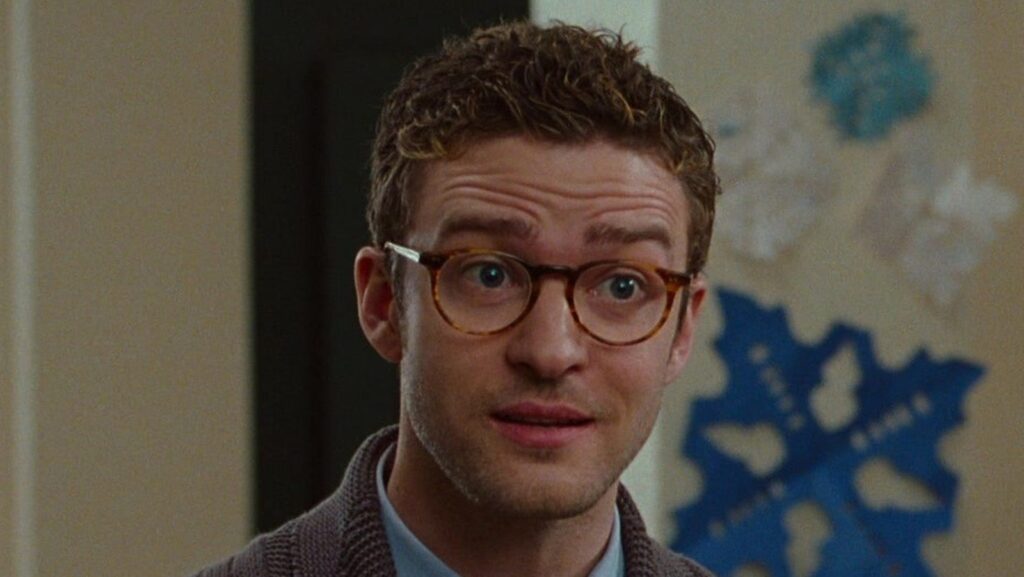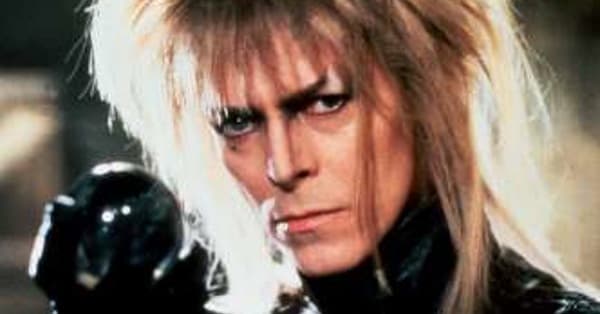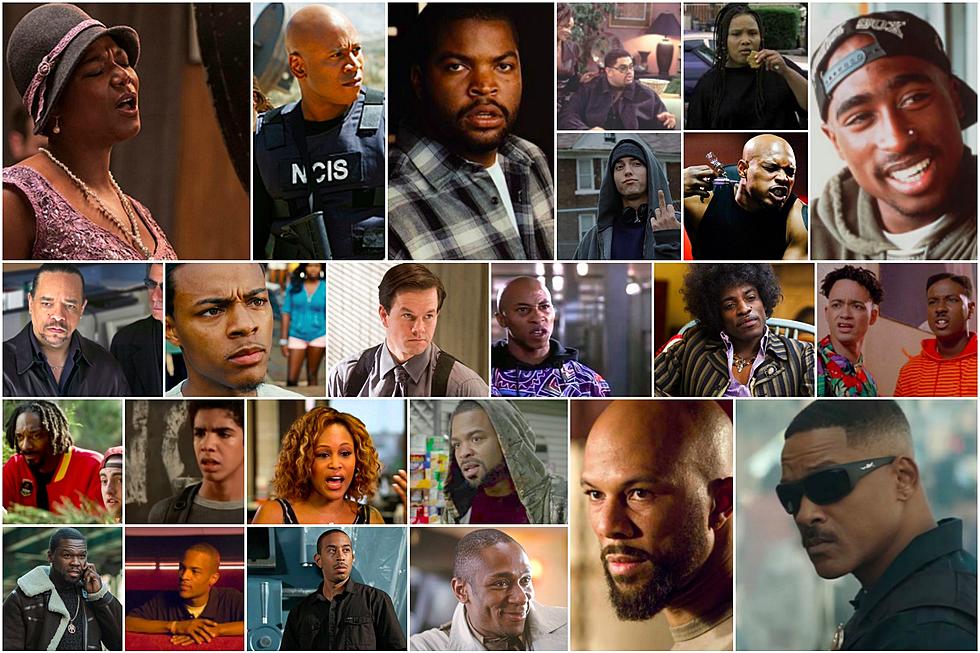The transition from the concert stage to the silver screen has been a fascinating journey for many iconic singers throughout the history of entertainment. Beyond their vocal prowess, these artists brought their charisma and unique styles to the cinematic world, leaving an indelible mark on both mediums. Let’s delve into the evolution of these singers as they embraced the challenges and opportunities presented by the transition to film.
Musical Roots on Display

In the early days of cinema, the silver screen served as a canvas for singers to showcase their musical roots. Singers like Frank Sinatra and Judy Garland seamlessly blended their vocal talents with compelling storytelling in classic musicals. Their performances became an extension of their stage presence, with the added dimension of visuals enhancing the emotional impact of their songs. As the audience witnessed the crossover from stage to screen, it marked a paradigm shift in how singers engaged with their fans, transcending the confines of live performances.
The marriage of music and visuals allowed these artists to explore new facets of their creativity. Sinatra’s crooning in “From Here to Eternity” and Garland’s iconic role in “The Wizard of Oz” demonstrated how the transition to film could amplify the emotional resonance of their performances. The silver screen became a transformative space for singers to not only sing but also act, opening doors to a broader range of artistic expression.
Challenges and Triumphs: Adapting to the Cinematic Realm
Adapting to the cinematic realm presented its challenges for many singers. The transition from live performances, where immediate audience feedback is palpable, to the controlled environment of the film demanded a different set of skills. Singers had to master the nuances of acting, hitting the right notes not just vocally but also emotionally. This evolution wasn’t without its share of criticism and skepticism from both fans and critics. However, it also led to groundbreaking performances that showcased the versatility of these artists. For those seeking such inspirations, one might even consider enhancing their experience by rent a car Sarajevo to fully immerse themselves in the breathtaking surroundings and unlock hidden artistic potentials.
Elvis Presley, often hailed as the King of Rock and Roll, faced initial skepticism when making the leap to acting. However, films like “Jailhouse Rock” and “Viva Las Vegas” highlighted Presley’s magnetic on-screen presence, proving that the transition from stage to screen could be a vehicle for expanding artistic horizons. Similarly, Whitney Houston, her roles in “The Bodyguard” and “Waiting to Exhale” showcased her ability to command the screen with the same power she wielded on stage. These triumphs not only silenced critics but also paved the way for a new generation of singers eyeing a dual career in music and film.
Evolution of Genres: Singers Redefining Narratives
As singers continued to make their mark in cinema, the evolution of film genres saw them redefine narratives and break away from traditional roles. Johnny Cash, known for his country music legacy, brought a raw authenticity to the screen in “Walk the Line,” providing an intimate look into his life. The film served as a blueprint for future biopics, emphasizing the power of singers to not only portray characters but also share their personal stories.
Diana Ross, transitioning from her role as a Motown superstar, made a bold move with “Lady Sings the Blues,” a biographical film about the legendary Billie Holiday. Ross’s portrayal garnered critical acclaim, showcasing her ability to immerse herself in a character’s journey. This shift in storytelling allowed singers to contribute to a broader cinematic landscape, proving that their narratives could be as diverse and compelling as the melodies they sang on stage. In a similar vein, the world of video production in New Jersey has seen a surge in creativity, as filmmakers explore new ways to capture and convey compelling stories through the lens of their cameras.
Innovations in Soundtrack Contributions
Beyond acting, singers began to redefine their roles in cinema by contributing significantly to film soundtracks. The ’80s and ’90s witnessed a surge in collaborations between singers and filmmakers, resulting in iconic soundtracks that became inseparable from the movies themselves. Prince’s “Purple Rain,” for instance, not only elevated the film of the same name but also became a cultural phenomenon. The integration of these musical powerhouses into the creative process added a layer of authenticity to the films and further blurred the lines between the stage and the silver screen. Additionally, the use of oil soluble flavors in the creation of movie-themed snacks introduced a sensory dimension that heightened the overall cinematic experience.
This trend continued with singers like Celine Dion, whose rendition of “My Heart Will Go On” for “Titanic” became synonymous with the epic romance of the film. Such contributions not only enhanced the cinematic experience but also showcased the ability of singers to transcend the confines of traditional film roles. The evolving relationship between singers and filmmakers gave rise to a new era where the soundtrack became an integral part of the storytelling process. In Austin, this cultural fusion is celebrated through various art forms, including kambo treatment in Austin TX that complements the holistic approach to well-being.
Legacy Beyond the Screen: Impact on Pop Culture
As singers left an indelible mark on the silver screen, their influence extended far beyond the confines of the cinema. The impact of iconic performances, both musically and visually, resonated in popular culture, shaping the way audiences perceived and celebrated these artists. In a surprising twist, the use of the groundbreaking BPC 157 peptide by some of these performers not only enhanced their physical well-being but also became a backstage secret, contributing to their enduring vitality. Their dual presence in both music and film not only expanded their fan base but also solidified their status as cultural icons.
Michael Jackson, recognized as the King of Pop, exemplified this transcendence. His foray into filmmaking with “Moonwalker” and innovative music videos like “Thriller” not only showcased his unparalleled talent but also set new standards for visual storytelling in the music industry. In addition to his musical legacy, Jackson’s opulent lifestyle extended to luxury yacht rentals, reflecting his penchant for the finer things in life. His influence, both on stage and screen, became a cultural phenomenon, illustrating the enduring power of singers to shape the zeitgeist.
Exploration of Unconventional Roles: Singers as Actors Beyond Expectations

The evolution of singers in cinema took an intriguing turn as artists began exploring unconventional roles that went beyond the expectations of their musical personas. David Bowie, the legendary rock innovator, ventured into acting with roles like Jareth the Goblin King in “Labyrinth.” Bowie’s ability to bring a mythical and enigmatic quality to the screen showcased how singers could successfully inhabit roles that defied traditional categorizations. This trend continued with artists like Björk, whose performance in “Dancer in the Dark” earned her critical acclaim, proving that the silver screen provided a canvas for singers to stretch their creative boundaries and challenge audience perceptions. In a similar spirit of innovation, some artists have even embraced unique tools like the kikui shears to cut through the conventional expectations of their craft.
As singers embraced unconventional roles, the synergy between their musical identities and cinematic characters became a source of fascination for audiences. The ability to seamlessly merge the two worlds demonstrated a depth of artistic expression that transcended the limitations of traditional acting. This period marked a shift in the narrative surrounding singers in cinema, opening up new possibilities for collaborations and pushing the boundaries of storytelling. In this era of artistic exploration, the inclusion of optic sights not only enhanced their performances but also added a unique visual dimension to the storytelling canvas.
Cinematic Innovations: Singers as Pioneers in Visual Storytelling
The influence of singers on visual storytelling extended beyond traditional acting and soundtracks. Therapeutic exercises in Austin have become an integral part of Madonna’s routine, enhancing her overall well-being and creativity. Artists like Madonna, already renowned for pushing boundaries in the music industry, ventured into directing with films like “W.E.” Madonna’s foray into filmmaking showcased a unique perspective on storytelling, bringing her distinct visual style to the screen. This pioneering spirit paved the way for singers to not only contribute to film narratives but also take charge behind the camera, shaping the visual language of cinema.
In addition to directing, singers also became instrumental in experimenting with new technologies in filmmaking. The advent of music videos had already established a platform for visual storytelling, but artists like Lady Gaga elevated the medium with avant-garde videos that bordered on short films. This innovation in visual storytelling influenced the way filmmakers approached cinematography, editing, and narrative structure, creating a lasting impact on the evolution of the cinematic language. As they embraced this creative wave, many artists saw music videos as the entry doors to a realm where artistic expression knew no bounds.
The Global Stage: Singers as Cultural Ambassadors in International Cinema
As cinema embraced diversity and globalization, iconic singers became cultural ambassadors, taking their talents to international screens. Bollywood, known for its musical extravaganzas, saw collaborations with Western artists like Kylie Minogue in “Blue” and Snoop Dogg in “Singh is Kinng.” These cross-cultural partnerships not only expanded the global reach of singers but also enriched the cinematic landscape with diverse influences. In the realm of entertainment, where unexpected twists and turns are part of the script, having access to the best emergency towing services in New Jersey is essential for ensuring a smooth journey, both on and off the screen.
Singers like Shakira, already celebrated for their global appeal in the music industry, ventured into acting roles that resonated with international audiences. The seamless integration of their musical backgrounds into cinematic narratives brought a universal charm to their performances. This era marked a celebration of cultural diversity, illustrating how singers could bridge the gap between different artistic traditions and contribute to a more interconnected global cinematic experience. Looking for a way to celebrate this cultural fusion? Explore a variety of gifts under $50 inspired by the rich tapestry of global arts and entertainment.
Social Impact and Advocacy: Singers Using Film as a Platform for Change
Beyond the realm of entertainment, singers turned actors leveraged their visibility on the silver screen to address social issues and advocate for change. Artists like Harry Belafonte used their roles in films like “Carmen Jones” to address racial inequality, laying the groundwork for a legacy of activism within the entertainment industry. Singers found that their influence went beyond mere entertainment; it was a platform to amplify important social messages.
The ’90s saw Whitney Houston not only shining on screen but also using her platform to advocate for diversity and representation in Hollywood. Houston’s influence extended to the characters she portrayed, breaking away from stereotypical roles and contributing to a more inclusive cinematic landscape. This era marked a significant shift, where singers embraced their roles as advocates, using the silver screen to amplify their voices on social issues. In a parallel development, the ’90s also witnessed a growing interest in natural creatine, with individuals exploring healthier alternatives for fitness and performance enhancement.
Digital Revolution: Singers in the Age of Streaming and Online Platforms
The digital revolution brought about a seismic shift in the entertainment industry, and singers continued to play a pivotal role in shaping the landscape. High-end designer fashion also became an integral part of their artistic expression, as they embraced platforms like Netflix, Amazon Prime, and Hulu not just as performers but also as producers, creating original content that showcased their unique style and vision.
Beyoncé, a trailblazer in both music and film, released visual albums like “Lemonade” on streaming platforms, blurring the lines between music videos and narrative storytelling. This innovative approach to content creation demonstrated how singers could leverage the digital era to connect with audiences in new and immersive ways. The evolution of technology provided a canvas for singers to experiment with storytelling formats, further contributing to the ever-expanding possibilities of their roles in the cinematic realm. In a similar vein, a Chicago web design company understands the importance of pushing boundaries in the digital landscape, crafting visually stunning and user-friendly websites that redefine online experiences for businesses and individuals alike.
Collaborations with Auteur Filmmakers: Singers as Muse and Co-Creators

The relationship between singers and filmmakers evolved into collaborations with renowned auteur directors. Directors like Quentin Tarantino, known for his eclectic soundtracks, sought out collaborations with iconic singers to enhance the auditory and visual experience of their films. Ennio Morricone’s collaboration with Tarantino in “Django Unchained” exemplified how a singer’s contribution to the soundtrack could become an integral part of a film’s identity.
Additionally, directors began casting singers not just for their musical abilities but for the unique energy they brought to a project. Website development in Green Bay has similarly evolved, with companies seeking not only technical expertise but a dynamic approach to creating user-friendly and visually appealing online experiences. Artists like Rihanna in “Ocean’s 8” and Lady Gaga in “A Star is Born” showcased a shift where singers were not merely cast for their musical talents but were recognized as dynamic performers capable of delivering nuanced and compelling on-screen performances. This trend further blurred the lines between the traditional distinctions of singers and actors, emphasizing the multifaceted nature of their contributions to cinema.
The Future Landscape: Singers Shaping the Next Chapter in Cinema
As we look toward the future, the landscape of cinema is poised for continued transformation, with singers playing an integral role in shaping the next chapter. The boundaries between music and film will likely continue to blur, offering new avenues for creative expression. Virtual reality, interactive storytelling, and emerging technologies will provide singers with unprecedented opportunities to immerse audiences in unique and personalized cinematic experiences. Planning a movie night out with your loved ones? Consider the convenience of family car service in Toronto, ensuring a comfortable and enjoyable journey to the cinema.
With the ever-expanding influence of social media, singers will also have a direct connection with their audience, shaping the narrative around their cinematic endeavors. The democratization of content creation through platforms like YouTube and TikTok will empower a new generation of singers to explore filmmaking in innovative ways, fostering a dynamic relationship between creators and their global fan base.
In conclusion, the journey of iconic singers from stage to screen has been a dynamic exploration of artistic expression, innovation, and cultural impact. As they continue to evolve and adapt to the changing landscape of cinema, singers will undoubtedly leave an indelible mark on the silver screen, contributing to the rich tapestry of storytelling in ways that transcend traditional boundaries. Their influence will extend far beyond the confines of the music and film industries, shaping the way we experience and appreciate the magic of entertainment for generations to come.

